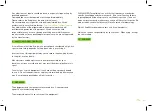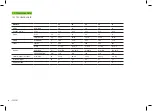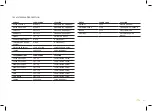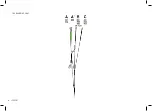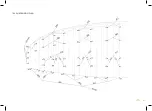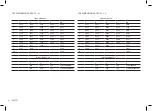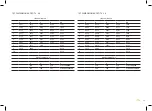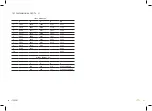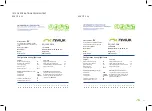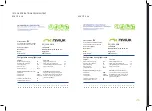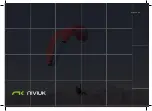
14
involved in doing so, concerns many pilots who want to have a controlled
rapid descent technique. For the above reasons we recommend using
the 3B3 line from the B riser.
This technique easily increases the descent rate without causing
problems and without the risk of causing a collapse while maintaining
high speed.
How? Locate the “3B3” line on your risers and, as you would when
applying big ears, simply pull down firmly and smoothly until you see
both wingtips drop back slightly. The forward speed of the glider speed
will then reduce slightly, quickly stabilise and then increase. You will then
experience a descent rate of around 5-6m/s.
We recommend the application of the speed bar whilst using this
technique. Controlled turning of the wing can easily be maintained by
weight shifting, exactly the same as you would with big ears. During this
manoeuvre, the first sensation is a decrease in relative wind and a slight
backwards inclination of the wing, as if going backwards.
To exit the manoeuvre release the lines as you would with big ears,
control the pitch and the wing will quickly adopt normal flight. This new
technique allows a comfortable and controllable rapid descent without
the risk of experiencing a cravat. It is very comfortable and makes
turning simple. We advise you to first try this technique in smooth
conditions with sufficient altitude above appropriate terrain.
This is a new controlled descent technique that only needs a little
practise to be executed with total comfort and effectiveness.
5.3 B-LINE STALL
When carrying out this manoeuvre, the wing stops flying, loses all
horizontal speed and the pilot is no longer in control of the KOYOT 4.
The airflow over the profile is interrupted and the wing enters a situation
similar to parachuting.
To enter this manoeuvre, the B-risers are gripped below the maillons and
symmetrically pulled down together (approx. 20-30 cm) and maintained
in that position.
Initiating the maneuver is physically demanding because it can take
some strength to pull the risers down until the wing is deformed. After
this, the physical effort is less. Continue to hold the risers in position.
Once the wing is deformed, its horizontal speed will drop to 0 km/h;
vertical descending speed increases to –6 to –8 m/s, depending on the
conditions and how the manoeuvre is performed.
To exit the manoeuvre, simultaneously release both risers. The wing will
then slightly surge forward and automatically return to normal flight. It is
better to let go of the lines quickly rather than slowly.
This is an easy descent technique to perform, but remember that
the wing will stop flying, will lose all forward horizontal speed, and
its reactions will change markedly when compared to a normal flight
configuration.
5.4 SPIRAL DIVE
This is a more effective way to rapidly lose altitude. Beware that the wing
will experience and be subjected to a tremendous amount of descending
and rotating speed (g-force), which can cause a loss of orientation and
consciousness (blackout). This manoeuvre must therefore be done
gradually to increase one’s capacity to resist the g-force exerted on
the body. With practise, you will fully appreciate and understand it.
Only practise this manoeuvre at high altitude and with enough ground
clearance.
To start the manoeuvre, first weight shift and pull the brake handle
located on the inner side of the turn. The intensity of the turn can be
controlled by braking slightly using the outer brake handle.
The KOYOT 4 flying at its maximum rotating speed can reach –20 m/s, or
Summary of Contents for KOYOT 4
Page 1: ...KOYOT 4 User s manual...
Page 18: ...18...
Page 19: ...19...
Page 22: ...10 3 RISERS PLAN 22...
Page 23: ...10 4 SUSPENSION PLAN 23...
Page 29: ...niviuk com...

















